
Telefonaktiebolaget LM Ericsson, commonly known as Ericsson, is a Swedish multinational networking and telecommunications company headquartered in Stockholm, Sweden. The company sells infrastructure, software, and services in information and communications technology for telecommunications service providers and enterprises, including, among others, 3G, 4G, and 5G equipment, and Internet Protocol (IP) and optical transport systems. The company employs around 100,000 people and operates in more than 180 countries. Ericsson has over 57,000 granted patents.
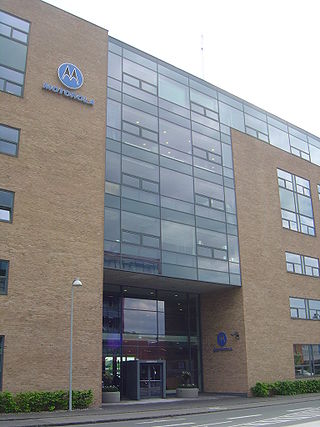
Motorola, Inc. was an American multinational telecommunications company based in Schaumburg, Illinois. It was founded in 1928 as Galvin Manufacturing Corporation by brothers Paul and Joseph Galvin. The company changed its name to Motorola in 1947. After having lost $4.3 billion from 2007 to 2009, Motorola was split into two independent public companies, Motorola Mobility and Motorola Solutions, on January 4, 2011. The reorganization was structured with Motorola Solutions legally succeeding Motorola, Inc., and Motorola Mobility being spun off.

Telia Company AB is a Swedish multinational telecommunications company and mobile network operator present in Sweden, Finland, Norway, Estonia, Latvia and Lithuania.
Telecommunications in Iceland is a diversified market. Iceland has a highly developed telecommunications sector with modern infrastructure. Multiple wholesale and retail providers are operated in a competitive market. As of 2024, Iceland's telecom infrastructure is fully digitised and mostly fibre based, with 93% of households having full-fibre availability. Landlines are based on VoIP technology. Mobile telecoms in Iceland adheres to the GSM standard and 2G, 3G, 4G and 5G services are available, as well as a TETRA network for emergency communications. Iceland is connected by four submarine cables to both Europe and North America. Broadcasting is based on DVB-T2 standard for television and FM for radio. There are a few printed newspapers, although most mass media is consumed online. Postal service is provided under universal obligation by the state-owned Iceland Post, but other private postal companies also operate.

Telenor ASA is a Norwegian majority state-owned multinational telecommunications company headquartered at Fornebu in Bærum, close to Oslo. It is one of the world's largest mobile telecommunications companies with operations worldwide, but focused in Scandinavia and Asia. It has extensive broadband and TV distribution operations in four Nordic countries, and a 10-year-old research and business line for machine-to-machine technology. Telenor owns networks in 8 countries.
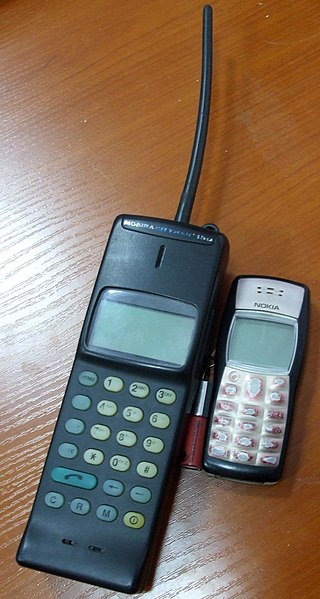
NMT is an automatic cellular phone system specified by Nordic telecommunications administrations (PTTs) and opened for service on 1 October 1981. NMT is based on analogue technology and two variants exist: NMT-450 and NMT-900. The numbers indicate the frequency bands used. NMT-900 was introduced in 1986 and carries more channels than the older NMT-450 network.

A car phone is a mobile radio telephone specifically designed for and fitted into an automobile. This service originated with the Bell System and was first used in St. Louis, Missouri, on June 17, 1946.
The signalling system used on the rail transport in Norway is regulated by the Regulations of December 4, 2001 no. 1336 about signals and signs on the state's railway network and connected private tracks.

1G refers to the first generation of mobile telecommunications standards, introduced in the 1980s. This generation was characterized by the use of analog audio transmissions, a major distinction from the subsequent 2G networks, which were fully digital. The term "1G" itself was not used at the time, but has since been retroactively applied to describe the early era of cellular networks.

Mobile radio telephone systems were mobile telephony systems that preceded modern cellular network technology. Since they were the predecessors of the first generation of cellular telephones, these systems are sometimes retroactively referred to as pre-cellular systems. Technologies used in pre-cellular systems included the Push-to-talk, Mobile Telephone Service (MTS), Improved Mobile Telephone Service (IMTS), and Advanced Mobile Telephone System (AMTS) systems. These early mobile telephone systems can be distinguished from earlier closed radiotelephone systems in that they were available as a commercial service that was part of the public switched telephone network, with their own telephone numbers, rather than part of a closed network such as a police radio or taxi dispatching system.

The history of mobile phones covers mobile communication devices that connect wirelessly to the public switched telephone network.
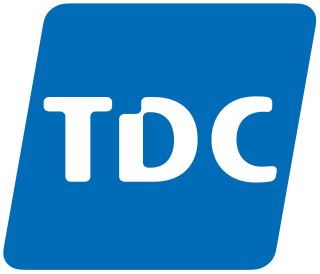
TDC Holding A/S or TDC Group is a Danish telecommunications company dating back to 1879. TDC Group is the largest telecommunications company in Denmark. The company's headquarters are located in Copenhagen.
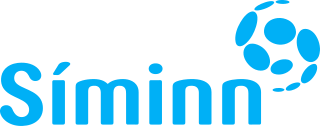
Síminn hf., previously named Landssíminn and Póstur og Sími, is an Icelandic telecommunications company. It offers communication services for both private and corporate clients, including mobile (2G/3G/4G/5G), landline (VoIP/POTS), Internet (ADSL/VDSL/FTTH) and IPTV services. Síminn also operates multiple TV channels and streaming services. Síminn is listed on the Icelandic stock exchange.
The Excel/Excell marketed a range of mobile phones developed by the British company Technophone in the 1980s. These mobile phones were advertised as the smallest, lightest most intelligent mobile phones in the world at that time, and were the first to fit in a pocket. While larger than later mobile telephones at 7 inches tall, 3 inches wide and 1 inch deep, they were still more compact than other mobile cell phones of their time, which included models by Motorola and Stornophone, as well as dedicated car phones.

The Motorola MicroTAC is a cellular phone first manufactured as an analog version in 1989. GSM-compatible and TDMA/Dual-Mode versions were introduced in 1994. The MicroTAC introduced a new "flip" design, where the "mouthpiece" folded over the keypad, although on later production the "mouthpiece" was actually located in the base of the phone, along with the ringer. This set the standard and became the model for later Clamshell design phones. Its predecessor was the much larger and heavier Motorola DynaTAC "brick" phone, and it was succeeded by the Motorola StarTAC in 1996. "TAC" was an abbreviation of "Total Area Coverage" in all three models.
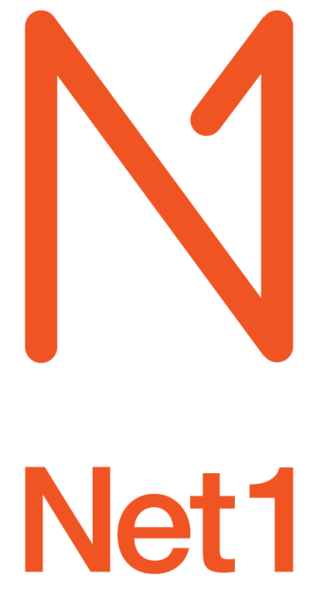
Net 1 is a Nordic telecommunications company operating 4G LTE mobile broadband networks in Norway, Sweden and Denmark since 2015, in Indonesia since 2017, and in the Philippines since 2019. Since February 2019, the Swedish operations of Net 1 are owned by Teracom, while the Danish operations of Net 1 are owned by Cibicom A/S since 2020. The Norwegian operations are owned by Ice group.

YouSee is the largest quadruple play service provider in Denmark, and is a part of Nuuday which is a spun-off company from TDC Group, the largest telecommunications company in Denmark which was split into two separate companies. YouSee currently has 994,000 customers, down from its peak of 1.4 million in 2015.
Thomas Haug was a Norwegian-Swedish electrical engineer known for developing the cellular telephone networks.

Ericsson Mobile Communications AB was a subsidiary of Ericsson, entirely focused on development of mobile phones (handsets), which has been fully acquired by Sony Corp. in 2011. This concluded tumultuous and unhappy venture between the two electronic giants The major offices were located in Lund, Kumla, Raleigh, North Carolina and Lynchburg, Virginia.

Ericsson Radio Systems AB was the name of a wholly owned subsidiary in the Ericsson sphere, founded on 1 January 1983 by buying out all former owners of Svenska Radioaktiebolaget (SRA). The company was well known in Scandinavia and elsewhere in the 1980s, as it was deploying NMT systems and developing a line of mobile telephones under the brand name Hotline. In 2002 the subsidiary changed its name to simply Ericsson AB and absorbed 19 other legal entities in the Ericsson sphere, but kept its company registration number with the Swedish state, so it is still the same legal entity as Ericsson Radio Systems. The merge of the smaller legal entities was done to cut down operating costs. The main activity within Ericsson AB is infrastructure for mobile telephony.













